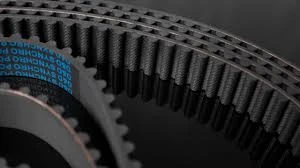- Arabic
- French
- Russian
- Spanish
- Portuguese
- Turkish
- Armenian
- English
- Albanian
- Amharic
- Azerbaijani
- Basque
- Belarusian
- Bengali
- Bosnian
- Bulgarian
- Catalan
- Cebuano
- Corsican
- Croatian
- Czech
- Danish
- Dutch
- Afrikaans
- Esperanto
- Estonian
- Finnish
- Frisian
- Galician
- Georgian
- German
- Greek
- Gujarati
- Haitian Creole
- hausa
- hawaiian
- Hebrew
- Hindi
- Miao
- Hungarian
- Icelandic
- igbo
- Indonesian
- irish
- Italian
- Japanese
- Javanese
- Kannada
- kazakh
- Khmer
- Rwandese
- Korean
- Kurdish
- Kyrgyz
- Lao
- Latin
- Latvian
- Lithuanian
- Luxembourgish
- Macedonian
- Malgashi
- Malay
- Malayalam
- Maltese
- Maori
- Marathi
- Mongolian
- Myanmar
- Nepali
- Norwegian
- Norwegian
- Occitan
- Pashto
- Persian
- Polish
- Punjabi
- Romanian
- Samoan
- Scottish Gaelic
- Serbian
- Sesotho
- Shona
- Sindhi
- Sinhala
- Slovak
- Slovenian
- Somali
- Sundanese
- Swahili
- Swedish
- Tagalog
- Tajik
- Tamil
- Tatar
- Telugu
- Thai
- Turkmen
- Ukrainian
- Urdu
- Uighur
- Uzbek
- Vietnamese
- Welsh
- Bantu
- Yiddish
- Yoruba
- Zulu
Říj . 06, 2024 13:55 Back to list
installing the serpentine belt
Installing the Serpentine Belt A Step-by-Step Guide
The serpentine belt is an essential component of your vehicle’s engine system. It powers various accessories, such as the alternator, power steering pump, water pump, and air conditioning compressor. Over time, the serpentine belt can wear out due to friction, heat, and environmental factors, leading to poor performance or complete failure. Replacing a worn serpentine belt is a straightforward task that you can tackle with the right tools and knowledge. This guide will walk you through the installation process step by step.
Tools and Materials Needed
Before getting started, gather the following tools and materials - A new serpentine belt - A belt tensioner tool or a ratchet with the appropriate socket - A flashlight - A mirror (optional) - Gloves (to protect your hands)
Step 1 Safety First
Ensure your vehicle is parked on a flat surface and turn off the engine. To prevent any accidental starts, disconnect the negative battery terminal. This step is crucial for your safety while working around the engine components.
Step 2 Locate the Serpentine Belt
Open the hood and locate the serpentine belt. You can find it around the front of the engine, looping around various pulleys. A belt routing diagram is often located on a sticker under the hood or in the vehicle’s manual. If you can’t find the diagram, take a picture of the belt’s configuration before you remove it for reference during installation.
Step 3 Release the Tension
To install the new belt, you'll need to relieve tension on the existing one. Using a belt tensioner tool or ratchet, rotate the tensioner pulley in the direction specified—often clockwise—to loosen the belt. Gently slide the belt off the pulleys while still holding the tensioner to keep it released.
installing the serpentine belt

Step 4 Remove the Old Belt
Once the tension is released, carefully remove the old serpentine belt from the pulleys. Inspect it for signs of wear, such as cracks, fraying, or shiny spots—these are indicators that it needed replacement.
Step 5 Install the New Serpentine Belt
Using the routing diagram or your reference photo, place the new serpentine belt around the appropriate pulleys. Start by threading it around the pulleys in the correct order, making sure it is seated properly. Pay close attention to the tensioner pulley, ensuring the belt is correctly aligned with its groove.
Step 6 Apply Tension and Double-Check
With the belt in place, rotate the tensioner pulley again to apply tension to the belt. Once the tension is set, visually inspect the belt to ensure it is correctly aligned and seated on all pulleys.
Step 7 Reconnect the Battery
Finally, reconnect the negative battery terminal. Start your vehicle and listen for any unusual noises that might indicate improper installation. Check that all accessories controlled by the serpentine belt are functioning correctly.
Conclusion
Replacing a serpentine belt is a manageable task that can save you time and money. Regularly check your belt’s condition, as replacing it at the first sign of wear can prevent more extensive damage to your engine system. With this guide, you can confidently install a serpentine belt and keep your vehicle running smoothly.
-
Korean Auto Parts Timing Belt 24312-37500 For Hyundai/Kia
NewsMar.07,2025
-
7PK2300 90916-T2024 RIBBED BELT POLY V BELT PK BELT
NewsMar.07,2025
-
Chinese Auto Belt Factory 310-2M-22 For BMW/Mercedes-Benz
NewsMar.07,2025
-
Chinese Auto Belt Factory 310-2M-22 For BMW/Mercedes-Benz
NewsMar.07,2025
-
90916-02660 PK Belt 6PK1680 For Toyota
NewsMar.07,2025
-
drive belt serpentine belt
NewsMar.07,2025

